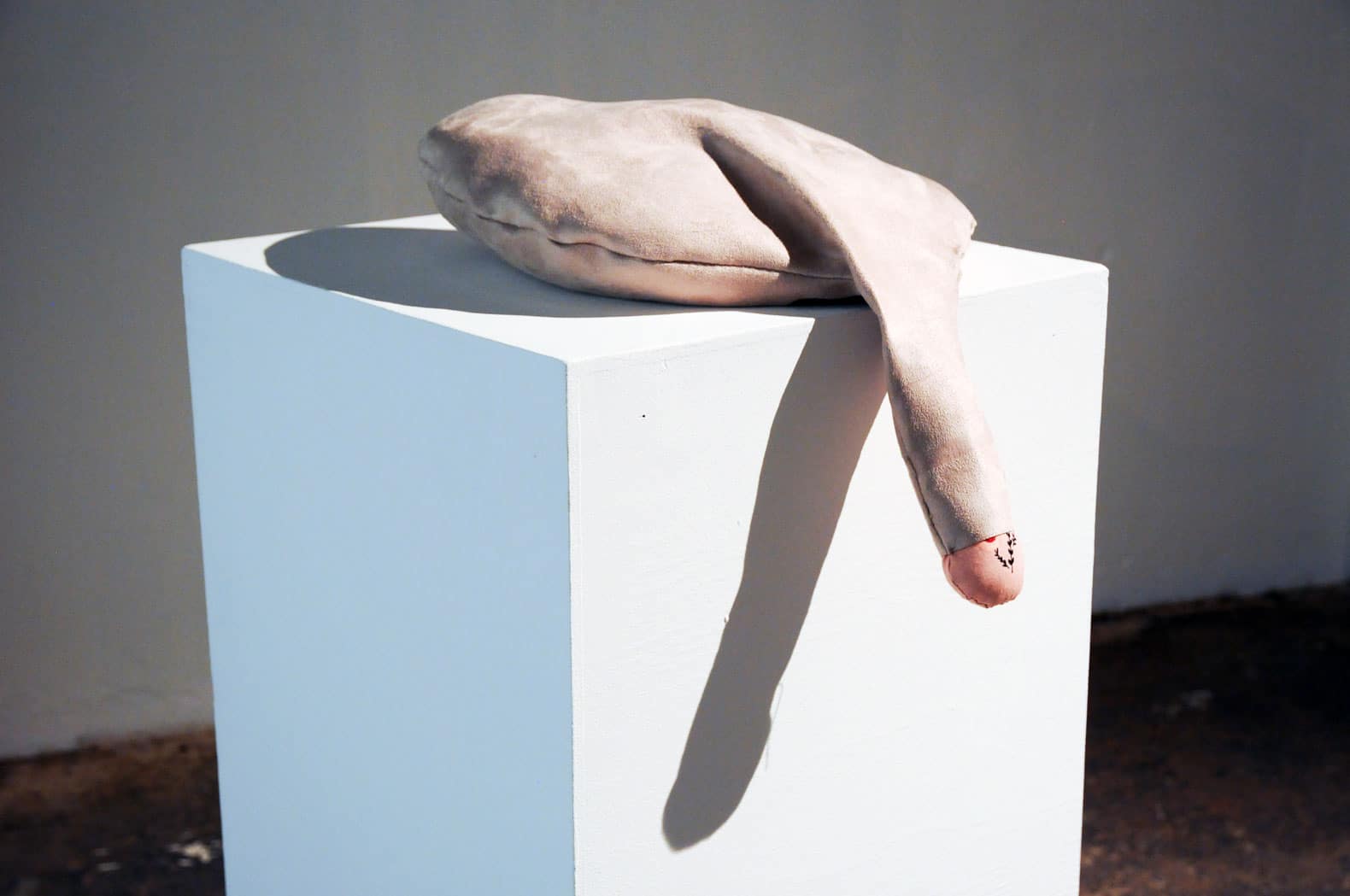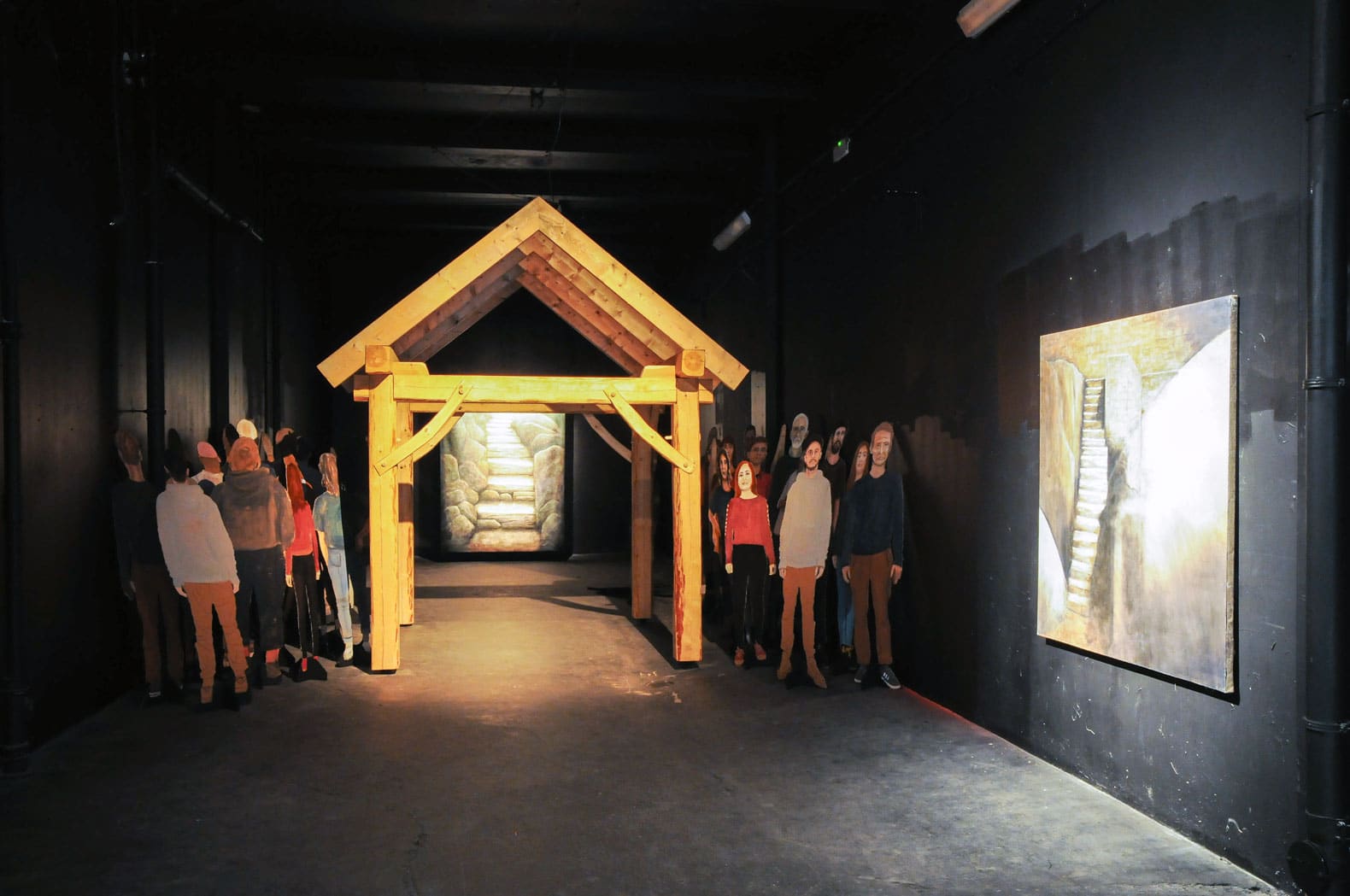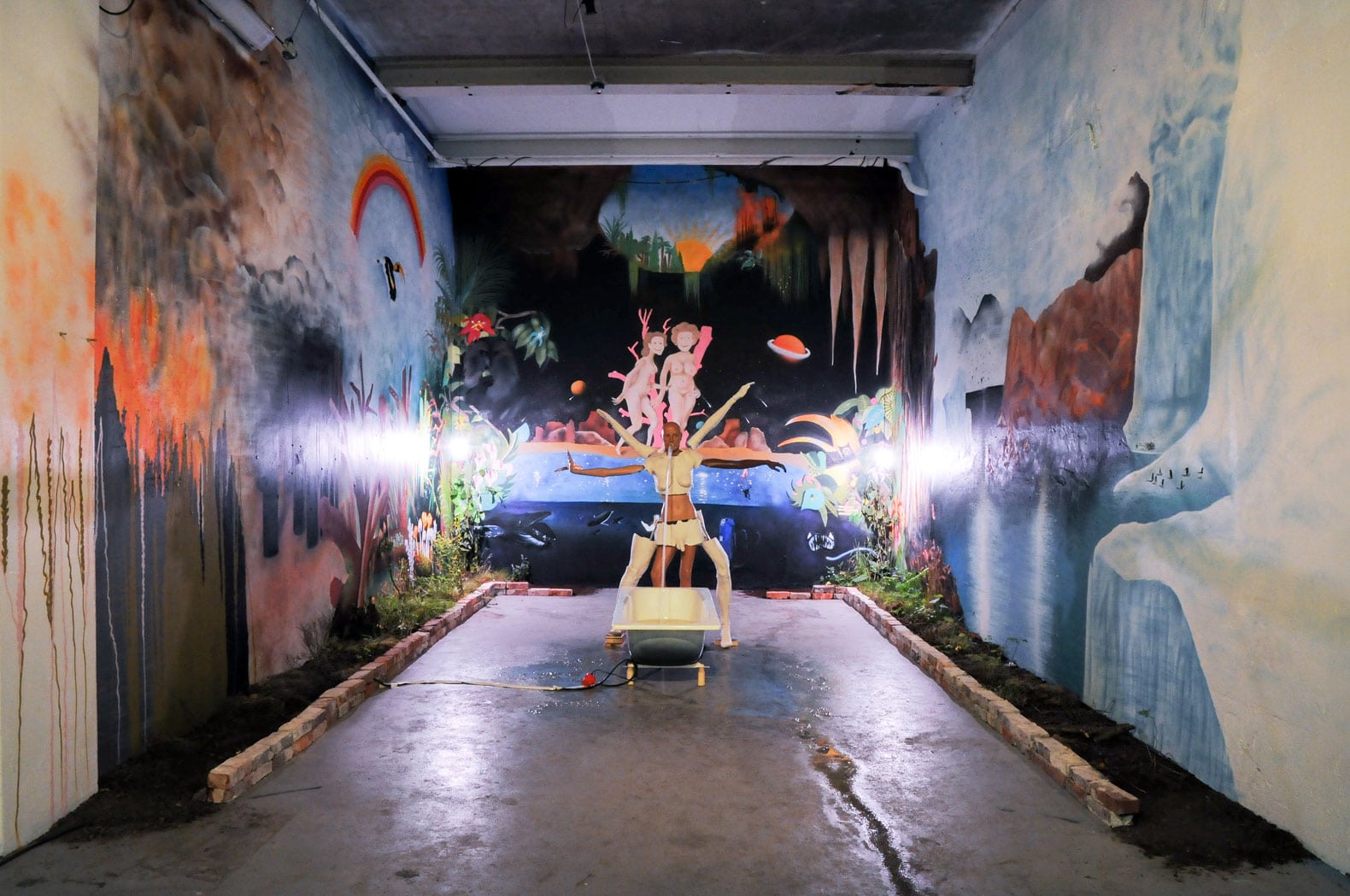The utopic in the social
While some artists draw attention to individuated modes of inhabiting space, others propose shared spaces for immersive experiences. Bjørn E. Eriksen uses the entire Hall 3 to suggest a path towards enlightenment, without being clear on whether it is religious or secular, intellectual or of other kinds. A wooden hut stands at the center of the hall. The hut is open on two sides, functioning like a passageway. Cardboard cutouts of human figures, painted in realist style, are lined up on the left and right side of the hut. Some of them are facing the front, others have their backs turned. At the end of the hall are two paintings of a flight of steps leading up to a light source. The installation as a whole is theatrical, as if a stageset for a rite of passage open to all. The visitors become its actors. We, from wherever we are, whoever we are, are invited to activate it by situating it in our lives, giving meaning to this generic passage. I am not sure if the human figures are necessary – it seems to me without them, the solitude that comes with the decision to walk towards the light or not could be augmented. But it is also possible to think of the artist as easing an otherwise challenging lone journey with care and support from fellow humans – at least imagining them.
Joachim H. Svendby offers another immersive experience in a different visual language. A hybrid, multiply gendered body spits water into a bathtub. S/he is enveloped by a mural depicting flowing streams, lush trees and pastures, naked human figures…as if civilization has returned to an ordinary state of nature. It could mean paradise for some, but could also be a depiction of exclusion as the fictive space is a habitat for human bodies with white skin. The hybrid figure is indifferent to it, or hesitant to look, or is forced to turn their attention away from it. In the midst of the mural, the figure is a counter monument: it is in remembrance, but also questioning the place of memory in the present, a mindless and repetitive activity that has no past to refer to. The simultaneous configuration of ruins and the utopic give rise to a tension, an unresolved ambivalence. I imagine how the current organization of the components in space could be developed further so that it is less approached as a point in the centre (the figure) and a plain in the periphery (the mural), but through lines that construct connections between visual and tactile details, and that work more on the fluidity between reality and idealization, highlighting the complexity of the artist’s struggle.
In the final hall?, Jonathan Bland sets up an installation with paintings of Stavanger houses. Instead of being mounted on the walls, they stand like hoarding commonly seen in construction sites in cities in the world. They become a route back in time – to walk through them is to reach a reading room where dated news clippings and architectural drawings of old Stavanger houses are exhibited. Together they tell stories of the past and the present. I asked the artist what impressed him most when he was going through the municipal archives on the buildings and street plans of the city. He said, “The architectural drawings.” I didn’t have the chance to find out more about why, but in hindsight, I wonder why this preference, or perhaps the instinct of the artist, is not more discernible in the work, and what might happen if less weight was placed on the paintings as hoarding. I speculate that this may have to do with thinking in terms of rhythm in space – complex decisions the artist has to make on what and how a visitor directs his/her gaze and body in situ. This may also have to do with the question of finding hope, despite loss. The dignity given to the houses may have turned them more into memories or impossible realities, than abstractions that leave room for envisioning the future. As I shared my thought with Bland that the work could use a context as public art in the streets of Stavanger, I had the Valberg Tower in mind. I wondered if Bland’s houses might sound like the wooden steps in the tower. I wonder if the evocative could also play a part in giving life to the documentative.
for now, a small conclusion…
My encounter with the show began with the ghostly energy that emanated from the space itself. I walked out informed by a vision of art as always already immersed in and responding to the risks of life, manifested as space and other conditions that regulate but also liberate the art. This perspective is not always easy to come by: art schools are often quick to align graduation shows with careerism, commercialism, and corporatism. If “rising stars” for the art market are already identified, experimentation, uncertainty, and questioning might be less encouraged. It requires trust and confidence to work with an alternative vision, both from the school and the artists themselves. I realized that it was not only a graduation show I was looking at, but a readiness of art to graduate into a life that is always already––bluntly, quietly, stubbornly––there.
afterword
It’s been two months since I finished a draft of this essay. Returning to it now, I wonder about the artistic freedom manifested in the ways KiR artists engage with the world and the kind of freedom we seek in Hong Kong. As I rework this essay, the wave of protests that began in June in Hong Kong this year continues. It has not been easy coming back to the quietude of the show. While I see nothing explicitly political in the KiR graduation show––not as any political contest between a ruling power and the people––I hear dissenting individual voices against multiple systems that constitute oppression – patriarchy, capitalism, compulsory heterosexuality, and technological determinism, which are situated in the political too.
In Stavanger, an art practitioner asked me many questions about Hong Kong, with care, wisdom, and curiosity. One of the last things she said was, “I am free in Norway, so I can only imagine [your unfreedom].” I take her words to heart. The flip side for me is that I may not have “known” freedom, but it is useful to think and act as if I do, so that a better world can be imagined.
*I am grateful to CAS for their support and their valuable comments on this essay. Any error is strictly mine.






